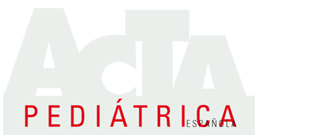Volumen 77 - Números 5 y 6 - Mayo y Junio 2019
Publicado en
Formación e información en pediatría
Comunicación científica (V). Congresos científicos (4): Claves para confeccionar buenas diapositivas
Scientific communication (V). Scientific meetings (4): Keys to developing a good slides
J. González de Dios1, M. González-Muñoz2, A. Alonso-Arroyo3,4, R. Aleixandre-Benavent41Servicio de Pediatría. Hospital General Universitario de Alicante. Departamento de Pediatría. Universidad «Miguel Hernández». Alicante. 2Facultad de Medicina y Odontología. Universidad de Valencia. 3Departamento de Historia de la Ciencia y Documentación. Facultad de Medicina y Odontología. Universidad de Valencia. 4IHMC López Piñero (CSIC-Universidad de Valencia). Unidad de Información e Investigación Social y Sanitaria (UISYS). Valencia
Publicado en
Formación e información en pediatría
Comunicación científica (IV). Congresos científicos (3): Claves para elaborar una buena comunicación científica
Scientific communication (IV). Scientific meetings (3): Keys to developing a good scientific communication
J. González de Dios1, M. González-Muñoz2, A. Alonso-Arroyo3,4, R. Aleixandre-Benavent41Servicio de Pediatría. Hospital General Universitario de Alicante. Departamento de Pediatría. Universidad «Miguel Hernández». Alicante. 2Facultad de Medicina y Odontología. Universidad de Valencia. 3Departamento de Historia de la Ciencia y Documentación. Facultad de Medicina y Odontología. Universidad de Valencia. 4IHMC López Piñero (CSIC-Universidad de Valencia). Unidad de Información e Investigación Social y Sanitaria-UISYS. Valencia
Publicado en
Formación e información en pediatría
Comunicación científica (III). Congresos científicos (2): Claves para elaborar un buen póster científico
Scientific communication (III). Scientific meetings (2): Keys to developing a good scientific poster
J. González de Dios1, M.ª González-Muñoz2, A. Alonso-Arroyo3,4, R. Aleixandre-Benavent41Servicio de Pediatría. Hospital General Universitario de Alicante. Departamento de Pediatría. Universidad «Miguel Hernández». Alicante. 2Facultad de Medicina y Odontología. Universidad de Valencia. Valencia. 3Departamento de Historia de la Ciencia y Documentación. Facultad de Medicina y Odontología. Universidad de Valencia. 4IHMC López Piñero (CSIC-Universidad de Valencia). Unidad de Información e Investigación Social y Sanitaria-UISYS. Valencia
Publicado en
Formación e información en pediatría
Comunicación científica (II). Congresos científicos (1): Elaboración de resúmenes
Scientific communication (II). Scientific meetings (1): Abstracts elaboration
J. González de Dios1, M. González-Muñoz2, A. Alonso-Arroyo3,4, R. Aleixandre-Benavent41Servicio de Pediatría. Hospital General Universitario de Alicante. Departamento de Pediatría. Universidad «Miguel Hernández». Alicante. 2Facultad de Medicina y Odontología. Universidad de Valencia. 3Departamento de Historia de la Ciencia y Documentación. Facultad de Medicina y Odontología. Universidad de Valencia. 4IHMC López Piñero (CSIC-Universidad de Valencia). Unidad de Información e Investigación Social y Sanitaria-UISYS. Valencia














